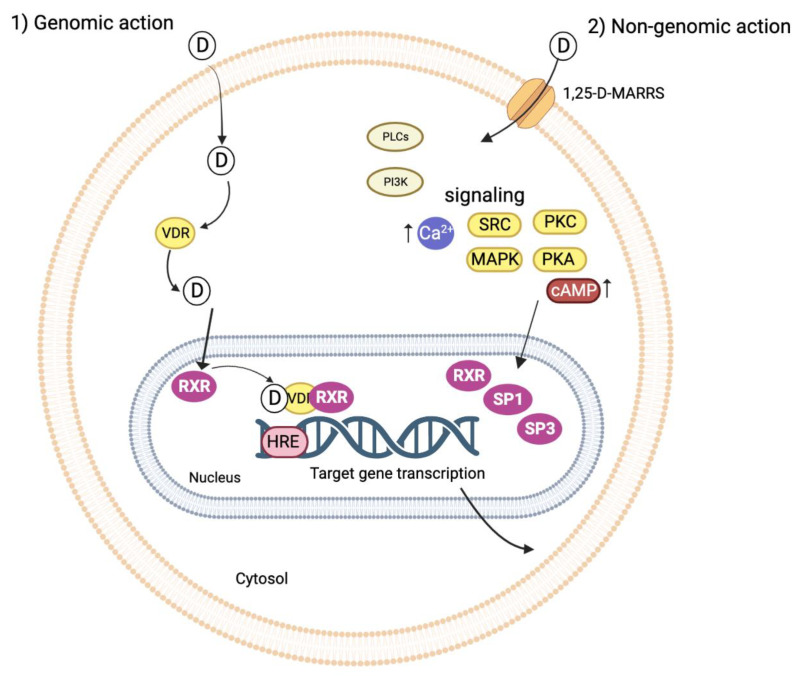Figure 3.
1,25(OH)2D3 genomic (1) and non-genomic (2) pathways. The VDR acts with other nuclear hormone receptors, especially the RXR [47]. 1,25(OH)2D3 crosses the cell membrane and enters the nucleus, where it interacts with the VDR. The VDR/1,25(OH)2D complex translocates into the nucleus in a ligand-dependent fashion [48]. In the nucleus, the VDR/1,25(OH)2D generates an active signal transduction complex consisting of the heterodimer of the vitamin D-liganded VDR and the RXR. The VDR/RXR heterodimer recognizes the HRE in the DNA sequence of the vitamin D-regulated genes [46]. Here, regulation of gene expression in specific tissues mediated by the VDR occurs, evoking the (1) genomic response. (2) The non-genomic actions are mediated by binding of calcitriol to the membrane located 1,25-D-MARRS, which affects numerous intracellular cell signaling pathways modulating the effects of gene expression through signal transduction to target transcription factors SP1, SP3, and RXR [51,52]. This figure was made using Biorender.com, agreement number XE24V0N4B7.

